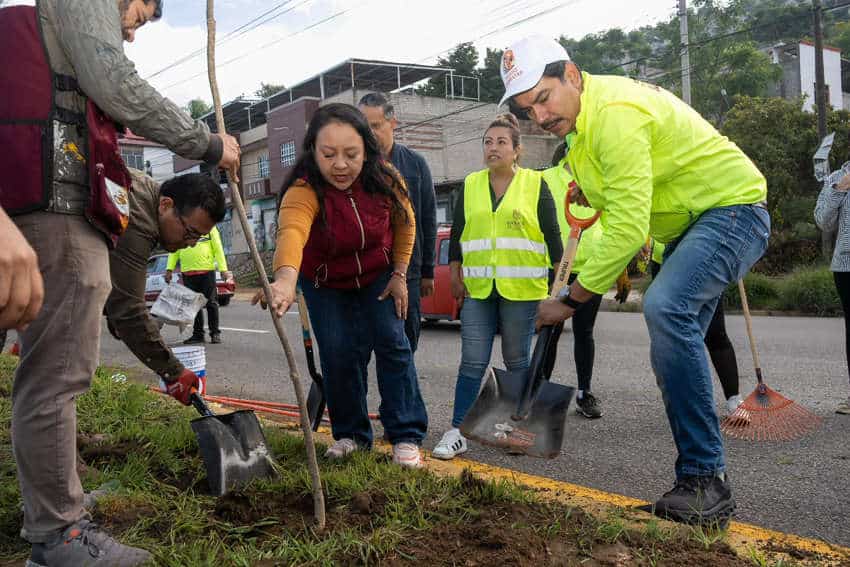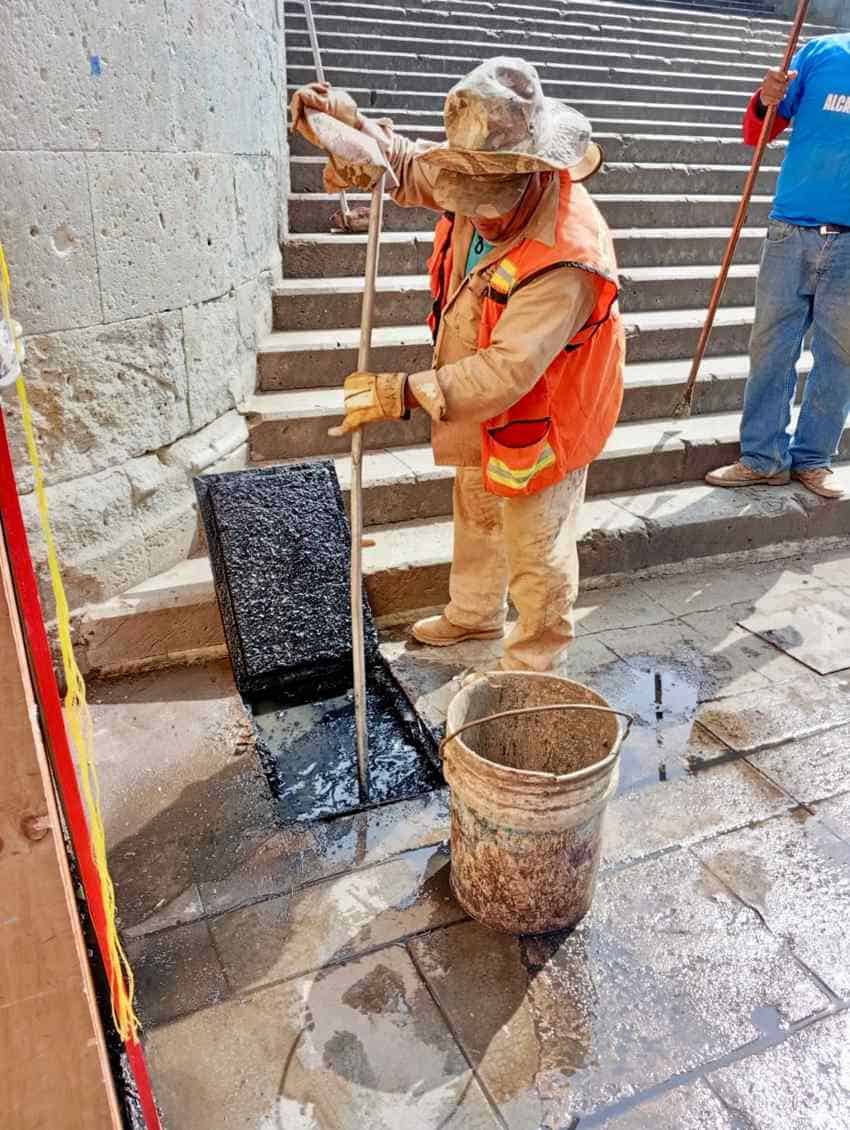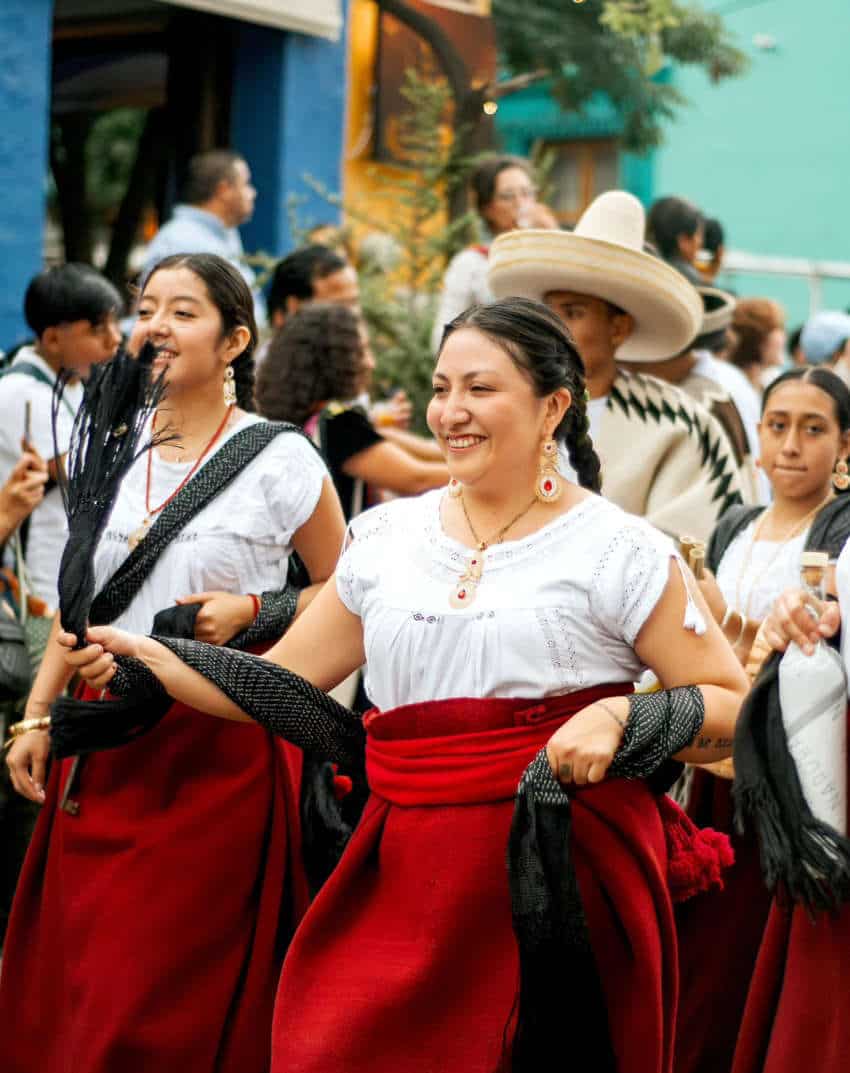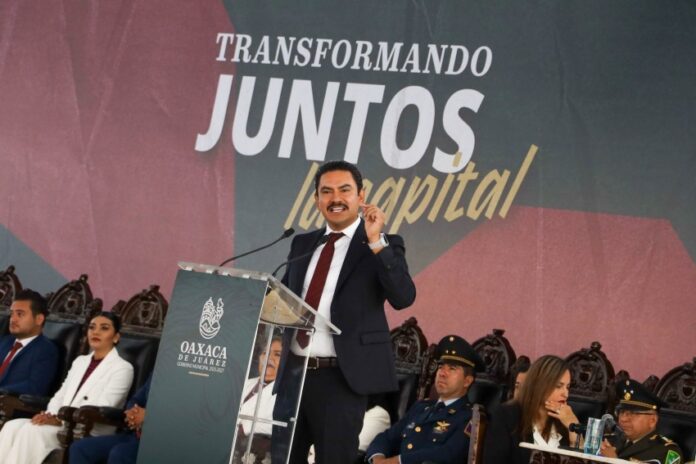Over the past six months, Oaxaca’s new mayor, Raymundo Chagoya, has made strides toward the goals he presented when sworn in: addressing safety in the city, restoring pockmarked roads through the Tache al Bache pothole-filling initiative, city cleanup and restoration and tackling water and local environmental issues, among others.
Much of Chagoya’s success to date has been through collaboration with other sectors of government, but also through his grassroots-minded initiatives, which directly involve residents. This has resulted in greater information-sharing with citizens and the strengthening of community relations.

Involving residents
Chagoya is focused on restoring Oaxaca’s identity as a heritage city by revitalizing the historic center and integrating conservation and maintenance teams. This includes an application for funds from the Association of Mexican World Heritage Cities. Key actions have included cleaning public areas with the involvement of residents, in community improvement events known as neighborhood tequios vecinales.
Tequios — an Indigenous word that embodies community values such as solidarity and teamwork — are groups of volunteers that are working with the government to plant trees, widen sidewalks and repair concrete and ironwork throughout the city.
Chagoya is particularly proud of the tequios’ success, which has gone a long way toward restoring areas in Oaxaca’s capital while at the same time bringing neighbors together.
Tackling Oaxaca city’s water issues
Chagoya has also been leading campaigns to dredge the city’s storm drains, essential work as Oaxaca’s rainy season arrives.

The municipal government is doing its part by promoting drinking water and sanitation projects to ensure a sustainable supply and improve environmental conditions in Oaxaca de Juárez’s metropolitan area. This work coordinates efforts across various local government departments, with two key projects focused on water security, management and safety: Water for All and the Safe Rain Program.
Chagoya said that water shortages in the city will not be solved by a single action but as a multistep plan that addresses issues with Oaxaca’s water sources — its rivers, reservoirs and wells. It also must deal with issues around water treatment, water distribution and, finally, water storage. Sewers must also be serviced during the rainy season to prevent flooding and further river contamination.
The Safe Rain Program includes preventive and immediate response actions to leaks and flooding in the city’s drainage system, in order to mitigate the rainy season’s effects on the capital. The priority is citizen safety.
Between this past June and November, monitoring of rain levels will be carried out throughout the city using a digital platform with an early warning system, coordinated with the regional meteorological radar and Mexico’s National Water Commission (CONAGUA).
Water storage is a challenge, the mayor said, as space is limited and standing water poses a risk of harboring dengue-carrying mosquitoes. However, he has announced that studies are underway for the installation of rainwater harvesting systems, which he said will allow for the use of up to 56 million liters over the next three years.
So far, much of what has been visible in the media about efforts to address water shortages has been the donation of water tanks, known in Mexico as tinacos. The government has already delivered 3,500 water tanks to neighborhoods with the greatest water shortages. In addition, the government plans to install 36 new hydrants, 20 provided by the municipality and 16 by the state government.
The wider, multifaceted water infrastructure plan underway seeks to strengthen the drinking water supply in strategic areas of the capital, with renovated infrastructure and increased operational capacity. This includes developing water treatment facilities, rehabilitating the city’s Trujano, Vincente Suárez and Candiani wells, developing complementary infrastructure such as an oscillation tower in Xoxocotlán to improve water pressure and providing water storage solutions via tinacos.
Cleaning up the Atoyac River
Chagoya has highlighted the growing success of the wastewater treatment plant in San Juan Bautista La Raya, near Oaxaca International Airport, which will improve the water quality of the increasingly polluted Atoyac River, an essential water source that has been the subject of concern. There has also been collaboration with the Oaxaca state government to clean the river, and construction has started on the road alongside it.
In the heart of the city, where the Atoyac runs behind the Abastos municipal market, a major cleanup has been completed, which removed mountains of trash that were previously spilling down the banks.

Chagoya emphasizes the importance of collective awareness, of caring for water, not wasting it, and understanding that its scarcity is not just a technical problem but also a shared societal responsibility. He shared this sentiment in a recent social media post.
“Water is life, it is health, and it is key to the sustainable development of our capital. Let’s reflect on its value and the responsibility we share to preserve it. Every drop counts. Every action contributes. Let’s continue building a more conscious, greener and more committed Oaxaca de Juárez,” he wrote.
The next few months will be telling about Chagoya’s government’s effectiveness at tackling these issues, since the rains in Oaxaca have only just begun. Chagoya also faces this month’s Guelaguetza festival, one of Oaxaca’s busiest seasons for cultural activities in the city.
These challenges will test the mayor’s primary goals — specifically maintaining community safety and cohesion while supporting a city that stays clean and healthy.
Anna Bruce is an award-winning British photojournalist based in Oaxaca, Mexico. Just some of the media outlets she has worked with include Vice, The Financial Times, Time Out, Huffington Post, The Times of London, the BBC and Sony TV. Find out more about her work at her website or visit her on social media on Instagram or on Facebook.
